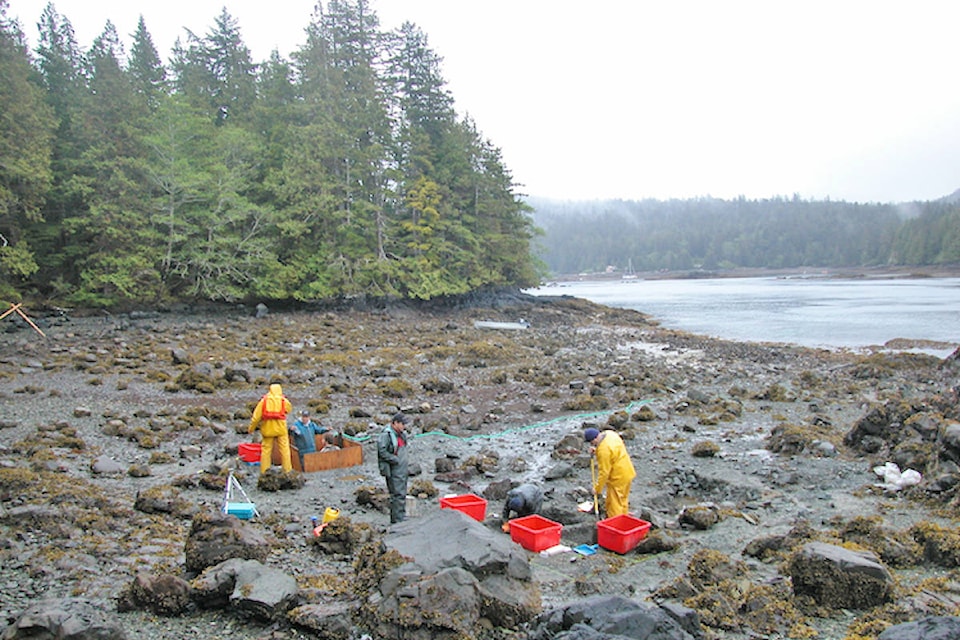An exciting new archaeological discovery was made on Haida Gwaii recently, as it was determined that humans had occupied the islands much earlier than previously thought.
Existing evidence had pointed to humans being present on Haida Gwaii sometime between 10,500-10,800 years ago. Now though, new findings have dialed the clock back on this timeline — suggesting 13,000 years of human presence.
| Rolf Mathewes exploring at Cape Ball on Haida Gwaii. (Rolf Mathewes submitted photo) |
Rolf Mathewes, a paleobotanist at Simon Fraser University (SFU), and his colleagues were the ones to make the discovery. Their team worked on Ellen Island, at the Kilgii Gwaay archaeological site. Previous research had determined that the island was used as a hunting and fishing camp until rising sea levels at the end of the Ice Age turned it into a lagoon. Many organic and stone artifacts have been discovered at the site.
READ MORE: SG̱aan Ḵinghlas-Bowie Seamount marine area receives renewed protection
A sediment core measuring two metres long provided the real breakthrough. Analysis of the sediment showed a high level of charcoal — evidence of fires made by humans. The determination that the sediment dated back 13,000 years — along with the fact that due to its climate natural forest fires are historically rare on Haida Gwaii — led the team to their conclusion that this was evidence of human presence approximately 2,200 years earlier than previously believed.
| Ellen Island. (Rolf Mathewes submitted photo) |
“The amount of charcoal that was being produced around this little pond must have been produced by humans being there,” Mathewes said. “These charcoal peaks, based on all the evidence we have, could not have been from natural forest fires. We interpret them [charcoal peaks] as very strong evidence that these were human caused fires.”
| Microscopic charcoal and spruce pollen grain. (Rolf Mathewes submitted photo) |
In addition to proving humans were on Haida Gwaii earlier than previously thought, the findings have even wider implications regarding human coastal migration during the time, says Mathewes. One of these revolves around how coastal North America became populated during this time-frame. The prevailing belief has long been that humans who left the north first travelled to the interior of the continent, before coming to the ocean regions after massive ice melts. Evidence like this shows that humans had reached the coast before these melting events however, meaning that many of them originally traversed down the coast from Alaska and the north as humans spread across the continent.
| Archaeologists coring at Kilgii Gwaay. (Rolf Mathewes submitted photo) |
READ MORE: Hundreds march the streets of Queen Charlotte seeking climate justice now, led by students
“People on the coast have been there for a long time, and they couldn’t have come from the interior,” Mathewes said. “All the evidence is that they were maritime adapted and seafood eaters, so they had to have come down knowing how to use boats very early on. Kilgii Gwaay is one of the sites that demonstrates that very concisely.”
The new findings were published in the journal Vegetation History and Archaeobotany in August.
Alex Kurial | Journalist
Alex Kurial
Send Alex email
Like the Haida Gwaii Observer on Facebook
Follow us on Twitter
